Eastern Europe
Modern-day Countries in this region
Bronze Age
Eastern Europe during the Bronze Age saw the rise of early societies tied to the Pontic-Caspian Steppe, a region often credited as the homeland of Indo-European peoples. Cultures such as the Yamna (or Pit Grave) culture flourished, characterized by their use of kurgans (burial mounds), domesticated horses, and early wheeled vehicles.
To the west of the steppes, the Trzciniec culture and the Srubnaya culture emerged, showcasing advanced metallurgy and the construction of fortified settlements. These societies began using bronze tools and weapons, leading to increased agricultural productivity and more structured social hierarchies. In present-day Ukraine, the Catacomb culture developed burial practices involving underground chambers, reflecting growing complexity in religious and societal norms.
Bronze Age
Iron Age
The Cimmerians, a nomadic people from the Pontic Steppe, dominated much of the region during this period, eventually giving way to the Scythians around the 8th century BCE.
The Scythians, skilled horsemen and warriors, controlled vast territories stretching from the Black Sea to the Ural Mountains. Their sophisticated art, known as Scythian animal style, reflected their nomadic lifestyle and reverence for nature. They interacted with Greek colonies along the northern Black Sea coast, such as Olbia and Chersonesus, establishing early trade connections between the steppe and the Mediterranean world.
In the forested regions of modern Belarus and Russia, the Dnieper-Dvina culture thrived, developing early ironworking and interacting with neighboring tribes. These groups laid the foundation for later Slavic cultures.
Iron Age
Rise of Macedon
Greek Poleis
Independent Greek poleis in the Mediterranean Basin between the 8th and 4th century BC.
Antiquity
The late Iron Age and early Antiquity saw the continuation of Scythian dominance, which was later challenged by the Sarmatians, another steppe people who migrated into the region. The northern Black Sea coast flourished as a cultural and economic hub due to the influence of Greek city-states, such as Odessos (modern Odessa) and Panticapaeum.
In the 4th century BCE, the Kingdom of Bosporus arose as a Greco-Scythian polity, blending steppe traditions with Hellenistic culture. This kingdom became an essential link in the trade of grain, fish, and slaves between the steppes and the Mediterranean.
By the late Antiquity period, the arrival of the Goths, followed by the Huns, disrupted the region's stability. The Gothic kingdoms, particularly those of the Tervings and Greuthungs, played a central role in the weakening of the Roman Empire. The Hun invasion under Attila devastated large parts of Eastern Europe, driving many tribes into Roman territories.
Slavic tribes began to emerge during this time, particularly in modern-day Belarus, Ukraine, and western Russia. These groups were the ancestors of the East Slavs and formed the cultural core of the region in subsequent centuries.
Rome
Greco-Persian Wars
Were a series of conflicts between the Achaemenid Empire and Greek city-states.
Ancient history
Antique Greek Leagues
In Archaic and Classical Greece (between the Eighth and Fourth centuries BC), city-states often united into Leagues. Initially relatively democratic political organizations, in later centuries many were ruled by individual Poleis, some more powerful than others, such as Athens, Sparta, Thebes and Corinth.
classical period of Ancient Greece
Barbarian kingdoms
Polities created by Germanic people (and a few other like the Alans) during the early Middle Ages.
Achaemenid Period
Wars of the Diadochi
Were a series of conflicts that were fought between the generals of Alexander the Great, known as the Diadochi, over who would rule his empire following his death.
Diadochi
Successor states to the Macedonian Empire (323-276 BC).
Hellenistic Period
Celtic Polities
All the Celtic polities that ever existed (covering Anatolia, Brittany, Ireland, Great Britain etc).
Eighteen Kingdoms
The eighteen fengjian states created in China by military leader Xiang Yu in 206 BCE. They would last until the Han unification in 202 BCE.
Roman Republic Classic Wars
Roman-Persian Wars
Were a series of Wars between Rome (first the Roman Republic then the Roman Empire and finally the Eastern Roman Empire) and Persia (the Parthian Empire, and then its successor, the Sasanian Empire). The wars were ended by the early Muslim conquests, which led to the fall of the Sasanian Empire and huge territorial losses for the Byzantine Empire.
Roman Republic Internal Wars
Principate Times of Rome
Early Empire of China
Early Barbarian Invasions
Gothic Wars
Were a series of conflicts between the Roman Empire and the Goths.
Conquest of the Japanese Island
Was the slow colonization of Japanese archipelago by the ethnically Yamato Japanese state.
Civil wars of the Tetrarchy
Factions during the Civil Wars of the Tetrarchy (306-324 AD).
Tetrarchy
Constantinian dynasty
Civil war of the Constantinian Dynasty
Polities ruled by the successors of Constantine The Great after his death (337 AD).
Eastern Roman Empire
Early Eastern Roman Empire
Western Roman Empire
Early Middle Ages
The collapse of Roman influence and the decline of steppe empires allowed for the rise of the Slavic peoples as the dominant group in Eastern Europe. The East Slavs began to consolidate into tribal unions such as the Polyani, Drevlyani, and Krivichi, which would later form the foundations of Russian, Ukrainian, and Belarusian identities.
In the 9th century, the region witnessed the rise of Kievan Rus’, a federation of East Slavic tribes led by the Varangians (Norsemen). Founded by Rurik in Novgorod, the Rus’ expanded southward under his successors, eventually establishing Kiev as their capital. The adoption of Christianity under Prince Vladimir the Great in 988 connected the region to Byzantine cultural and religious traditions, shaping the region’s identity for centuries.
Early Middle Ages
Barbarian Invasions
Frankish Partitions
The Frankish Kingdom was partitioned and reuinited several times as the Frankish rulers used to divide their territories equally among their heirs. This lead also to a number of wars and revolts.
Avar-Byzantine wars
Were a series of conflicts between the Byzantine Empire and the Avar Khaganate.
Early Muslim conquests
Were the military campaigns by the first three Islamic Caliphates (the Caliphate of Muhammad, the Rashidun Caliphate and the Umayyad Caliphate) that led to the Islamic conquest of most of the Middle East as well as the Iberian Peninsula.
arab caliphate
Tang Era
Byzantine-Bulgarian Wars
Were a series of conflicts fought between the Byzantines and Bulgarians which began when the Bulgars first settled in the Balkan peninsula in the 5th century, and intensified with the expansion of the Bulgarian Empire to the southwest after 680 AD.
Maritime Republics
Thalassocratic city-states of the Mediterranean Basin during the Middle Ages. Founded around the 9th century, in some cases they lasted until the 18th and 19th centuries (Venice, Genoa, Ragusa).
Abbasid Revolution
Was the overthrow of the Umayyad Caliphate (661-750 CE), the second of the four major Caliphates in Islamic history, by the third, the Abbasid Caliphate (750-1517 CE).
Early Middle Ages
The Franks
Caucasian Khanates
The Caucasian Khanates, also known as the Azerbaijani khanates, Persian khanates, or Iranian khanates, were various principalities established by Persia in the Caucasus from the late Safavid to the Qajar dynasty (from 1747 until the mid-19th century).
Norse/Viking Polities
Polities created by the Norsemen in Europe and North America during the Middle Ages.
Hungarian invasions
High Middle Ages
The Kievan Rus’ reached its peak during the 11th century under the rule of Yaroslav the Wise, becoming a powerful and wealthy state. Kiev became a major center of trade, culture, and Orthodox Christianity. However, internal fragmentation and the rise of competing principalities, such as those in Novgorod, Vladimir-Suzdal, and Galicia-Volhynia, weakened the federation.
In the 13th century, the Mongol invasion led by Batu Khan devastated Kievan Rus’. Many cities, including Kiev, were sacked, and the region came under the control of the Golden Horde, a Mongol khanate. This marked a turning point as power shifted northward to regions like Vladimir and Novgorod.
Ancient Estonian Counties
Ancient Counties attested by sources in Estonia in the first centuries of the Common Era, lasting until the Northern Crusades in the thirteenth century.
High Middle Ages
Russian Principalities
Polities that emerged from the fragmentation of the Kievan Rus' from around 1240 AD.
The Kievan Rus'
Byzantine-Seljuq wars
Were a series of conflicts in the Middle Ages between the Byzantine Empire and the Seljuk Empire.
Georgian-Seljuk wars
Were a series of military conflicts between the Seljuk Empire and its vassals against the Kingdom of Georgia.
Crusades
The Crusades were a series of religious wars initiated, supported, and sometimes directed by the Latin Church in the Medieval period. The best known of these military expeditions are those to the Holy Land in the period between 1095 and 1291.
Holy Roman Empire
Polities that at some point were part of the Holy Roman Empire (962-1806).
Civil war era in Norway
Was a period in the Kingdom of Norway were several rival kings and pretenders waged wars to claim the throne.
Byzantine Fragmentation
Greek polities that succeeded the Byzantine Empire after the Fourth Crusade (1204).
Mongol invasions and conquests
Were a series of military campaigny by the Mongols that created the largest contiguous Empire in history, the Mongol Empire, which controlled most of Eurasia.
High Middle Ages
States emerged from the Northern Crusades
States founded during the Northern Crusades (12th and 13th century).
Swedish-Novgorodian Wars
Were a series of conflicts in the 12th and 13th centuries between the Republic of Novgorod and Medieval Sweden over control of the Gulf of Finland.
Prussian uprisings
Were a series of uprisings by the Old Prussians, a Baltic tribe, against the rule of the Teutonic Knighsts that had conquered Prussia and its nearby regions.
Successors of the Mongol Empire
Polities emerged after the fall of the Mongol Empire (1206-1368).
Mongol Civil Wars
Were a series of wars between the successor states of the Mongol Empire.
Anatolian Beyliks
Turkish principalities in Anatolia that resulted from the fragmentation of the Seljuk Empire in the second half of the 13th century.
Late Middle Ages
The Mongol domination weakened over time, and the rise of the Grand Duchy of Moscow (Muscovy) marked the beginning of a new era for Eastern Europe. Under rulers such as Ivan I Kalita, Moscow expanded its influence, eventually becoming the center of resistance against the Mongols. The Battle of Kulikovo in 1380 symbolized the weakening of Mongol control.
In present-day Ukraine and Belarus, the Grand Duchy of Lithuania and later the Polish-Lithuanian Commonwealth became dominant. These states absorbed many East Slavic lands, fostering cultural and religious diversity.
Late Middle Ages
Polish-Teutonic Wars
Were a series of Wars between the Teutonic Order and the Kingdom of Poland. .
Galicia-Volhynia Wars
Were several wars fought in the years 1340-1392 over the succession in the Kingdom of Galicia-Volhynia.
Yugra Principalities
Proto-states in the region to the east of the northern Ural Mountains inhabited by the Khanty (a.k.a. Ostyaks; Hanty) and Mansi (Vogul; Maansi) peoples.
Timurid invasions
Military campaigns of Timur (or Tamerlane), a Turco-Mongol conqueror who founded the Timurid Empire in and around modern-day Afghanistan, Iran, and Central Asia.
Muscovite-Lithuanian Wars
Were a series of wars between the Grand Duchy of Lithuania and the Grand Duchy of Moscow (later the Tsardom of Russia).
Bulgarian-Ottoman Wars
Were a series of wars between the Ottomans and the Bulgarians that resulted in the Ottoman conquest of the Second Bulgarian Empire.
Ottoman-Venetian Wars
Were a series of conflicts between the Ottoman Empire and the Republic of Venice
Ottoman Interregnum
Interregnum that followed the war with Timur (1402-1413 AD).
Russo-Kazan Wars
Was a series of wars fought between the Grand Duchy of Moscow and the Khanate of Kazan from 1439, until Kazan was finally conquered by the Tsardom of Russia under Ivan the Terrible in 1552.
Polish-Ottoman Wars
Were a series of Wars between the Polish-Lithuanian Commonwealth and the Ottoman Empire.
Late Middle Ages
Early modern period
The early modern period marked the rise of Muscovy, which transformed into the Tsardom of Russia in 1547 under Ivan IV (Ivan the Terrible). His reign saw significant territorial expansion into Siberia and Central Asia, along with internal reforms.
In present-day Belarus and Ukraine, the Polish-Lithuanian Commonwealth dominated much of the territory. The Union of Brest (1596) sought to unify Orthodox Christians with the Catholic Church, creating the Uniate (Greek Catholic) Church, but it caused deep divisions in the region. Ukrainian Cossacks, semi-autonomous warrior communities, emerged as defenders of Orthodox Christianity and local autonomy. Their Khmelnytsky Uprising (1648) against Polish rule led to the creation of the Cossack Hetmanate, which later aligned with the Russian Tsardom under the Treaty of Pereyaslav (1654).
By the late 17th century, Russia began asserting dominance in Eastern Europe. Under Peter the Great, Russia became a major European power. Peter’s reforms modernized the military, established Saint Petersburg, and secured access to the Baltic Sea through victory in the Great Northern War (1700-1721).
Ukraine, divided between Russian and Polish-Lithuanian control, became a contested space. The Partition of Poland (1772, 1793, 1795) saw Belarus and much of Ukraine absorbed into the expanding Russian Empire.
Early modern period
Ottoman-Persian Wars
Were a series of wars between Ottoman Empire and the Safavid, Afsharid, Zand, and Qajar dynasties of Iran (Persia) through the 16th-20th centuries.
Ottoman-Habsburg Wars
Were a series of conflicts between the Ottoman Empire and the Habsburg Domains. The conflicts started with the partition of Hungary between the Ottomans and the Habsburgs after the Battle of Mohács (1526).
Northern Wars
A series of wars fought in northern and northeastern Europe from the 16th to the 18th century.
Conquests of Selim II
Expansion during the rule of Selim II in the Ottoman Empire.
Conquests of Murad III
Expansion during the rule of Murad III in the Ottoman Empire.
Tatar invasions of Europe in the XVI and XVII centuries.
The Crimean Tatars repeatedly undertook campaigns to Central Europe and Russia in the XVI and XVII centuries.
Conquest of the Khanate of Sibir
Was a Russian military campaign that resulted in the conquest of the Khanate of Sibir.
Colonization of the east
Were a series of military and exploration campaigns where Russia gradually extended into the territories of northeastern Asia.
Time of Troubles
Was a period of political crisis during the Tsardom of Russia which began in 1598 with the death of Fyodor I, the last of the Rurik dynasty, and ended in 1613 with the accession of Michael I of the House of Romanov.
Qing conquest of the Ming
Was a a conflict that saw the transition from the Ming to the Qing Dinasty in China. The Qing created an indpendent domain in Manchuria, revolted against the Ming and systematically conquered all Ming territories in the following decades.
Sino-Russian border conflicts
Were a series of intermittent skirmishes between the Qing dynasty of China and the Tsardom of Russia in which the latter tried and failed to gain the land north of the Amur River.
Ten Great Campaigns
Were a series of military campaigns launched by the Qing dynasty of China in the mid-late 18th century during the reign of the Qianlong Emperor.
German Confederation
Polities that at some point were part of the German Confederation (1815-1866).
Chukchi War
Were a series of Russian invasions of the territories of the Chukchi people, in the Chukchi Peninsula (Siberia).
Russo-Persian Wars
Were a series of wars between Persia and Russia in the period 1651-1828.
Conquests of Nader Shah
Expansion during the rule of Nader Shah of the Afsharid Dynasty.
War of the Polish Succession
Was a major European conflict sparked by a Polish civil war over the succession to Augustus II of Poland.
Silesian Wars
Were a series of wars between the Habsburg Domains and Prussia for the control of Silesia. The war started during the War of the Austrian Succession, when Frederick the Great of Prussia invaded Habsburg-held Silesia.
Civil War between Afsharid and Qajar
Was a civil war in Persia that led to the end of the Afsharid Dynasty, whose place was taken by the Qajar Dynasty.
Seven Years' War
Was a global conflict that involved most of the European great powers, and was fought primarily in Europe, the Americas, and Asia-Pacific. At the end of the war the main winner was Great Britain, that obtained territories in North America, the Caribbean and India, becoming the most powerful maritime and colonial of the European powers.
Early modern period
Partitions of Poland
Were three partitions of the Polish-Lithuanian Commonwealth that took place toward the end of the 18th century and ended the existence of the state. The partitions were conducted by the Habsburg monarchy, the Kingdom of Prussia, and the Russian Empire.
Caucasian War
Was a series of Russian military expeditions into northern Caucasus that resulted in the inglobation of this region in the Russian Empire.
French Revolutionary and Napoleonic Period (1789-1815)
Russia, under Tsar Alexander I, initially allied with Napoleon but later opposed him. The French invasion of Russia (1812) devastated much of the region, particularly Belarus and western Russia. Napoleon’s army suffered catastrophic losses during the retreat from Moscow, a turning point in the war.
In Ukraine and Belarus, the Napoleonic campaigns disrupted agricultural production and led to widespread suffering. However, Napoleon's defeat solidified Russia’s position as a dominant European power. The Congress of Vienna (1815) recognized Russian control over large portions of Eastern Europe, including modern Belarus and Ukraine.
French Revolutionary and Napoleonic Wars
XIX Century
French Revolutionary and Napoleonic Wars
Were a series of conflicts between France and several European monarchies between 1792 and 1815. They encompass first the French Revolutionary Wars against the newly declared French Republic and from 1803 onwards the Napoleonic Wars against First Consul and later Emperor Napoleon Bonaparte. They include the Coalition Wars as a subset: seven wars waged by various military alliances of great European powers, known as Coalitions, against Revolutionary France - later the First French Empire - and its allies.
Napoleonic Polities
Napoleonic creations. It includes also principalities created in Germany but not German polities that already existed and just changed name or form.
19th Century
The 19th century was a period of rapid change in Eastern Europe, dominated by the Russian Empire. Alexander I and his successors faced increasing pressure from nationalist movements and revolutionary ideals spreading across Europe.
In Ukraine and Belarus, Russification policies sought to suppress local languages and cultures, promoting Russian identity. The Uniate Church was outlawed in Belarus (1839) and much of Ukraine. However, national consciousness began to rise among Ukrainians and Belarusians, particularly in rural areas, where language and folk traditions persisted.
The Crimean War (1853-1856) exposed the weaknesses of the Russian Empire, leading to significant reforms under Alexander II, including the abolition of serfdom (1861). These reforms, however, failed to alleviate widespread poverty and social inequality, leading to unrest.
Industrialization began to transform parts of Ukraine, particularly in the Donbas region, where coal and steel industries emerged. This development laid the groundwork for future conflicts over the region’s resources.
Polish Polities after the Congress of Vienna
Polish polities created after the Congress of Vienna (1815).
XIX Century
Century of humiliation
A period (1839-1949) of foregin interventions in China resulting in the occupation, conquest or lease of large territories by foregin countries.
Revolutions of 1848
Was a revolutionary wave in Europe that started in France. The revolutions were essentially democratic and liberal in nature, with the aim of removing the old monarchical structures and creating independent nation-states, as envisioned by romantic nationalism.
German Unification Wars
Were a series of wars that resulted in the creation of the German Empire under Prussian leadership in 1871.
From 1900 to the End of World War II
The Russian Revolution of 1917 led to the collapse of the Russian Empire and the establishment of the Soviet Union. In the aftermath, Ukraine declared independence in 1918 as the Ukrainian People’s Republic, while Belarus briefly proclaimed independence as the Belarusian Democratic Republic. Both states were short-lived, as the Red Army regained control and incorporated the territories into the USSR.
During the interwar period, western Ukraine and Belarus were annexed by Poland, while the rest became Soviet republics. The Holodomor (1932-1933), a man-made famine in Soviet Ukraine, caused millions of deaths and is widely regarded as an act of genocide. Collectivization and Stalinist purges devastated rural populations in both Ukraine and Belarus.
World War II was catastrophic for the region. The Nazi invasion of the USSR (Operation Barbarossa, 1941) led to the occupation of Ukraine and Belarus. Both regions suffered immense destruction, with entire cities razed and millions of civilians killed. Partisan resistance movements were active in Belarus, playing a critical role in harassing Nazi forces.
By the war’s end, Eastern Europe lay in ruins. Ukraine and Belarus, now Soviet Socialist Republics, faced the immense task of rebuilding under Stalin’s authoritarian rule.
World War I
Was a global conflict between two coalitions, the Allies (primarily France, the United Kingdom, Russia, Italy, Japan, and the United States) and the Central Powers (led by Germany, Austria-Hungary, and the Ottoman Empire). It was mainly caused by the competition of the western countries over domain in Europe and in the rest of the world with their colonial empires. The war ended with the defeat of the Central Powers. The war also caused the Russian Revolution and the ensuing Russian Civil War.
Russo-Japanese War
Was a war between the Japanese Empire and the Russian Empire over the control of Manchuria and Korea.
1900-1945
1900-1945
World War I
Chinese Warlord Era
Was a period in the history of the Republic of China when control of the country was divided among former military cliques of the Beiyang Army and other regional factions.
Separatists (Russian Civil War)
Local secessionist polities during the Russian Civil War (1917-1923) that were neither communists nor whites.
Whites (Russian Civil War)
Conservative countries - in many cases created with the support of western europeans, japanese and U.S. - during the Russian Civil War (1917-1923).
Russian Civil War
Was a Civil War in Russia that involved varios factions but mainly the Bolsheviks and the conservative White Army in the core Russian territories, as well as a multitude of local secessionist states. At the end of war the Bolsheviks were victorious and established the Soviet Union.
Austria-Hungary Fragmentation
Baltic States
Estonia, Latvia and Lithuania through the 20th and 21st centuries.
Finnish Civil War
Germany after World War I
Warsaw Pact
Countries that at some point where part of the Warsaw Pact (1955-1991).
Russian Civil War
Chinese Civil War
Was a civil war fought in China between the Kuomintang and the Chinese Communist Party. The war continued intermittently for more than twenty years, and overlappes with the Second Sino-Japanese War that started in 1937 with the Japanese occupation of Manchuria. The Communists gained control of mainland China and established the People's Republic of China in 1949, forcing the leadership of the Kuomintang-led Republic of China to retreat to the island of Taiwan.
World War II
Was a global conflict that lasted from 1939 to 1945 (it started sooner in certain regions) between the Axis Powers (mainly Germany, Japan and Italy) and the Allies (mainly the Soviet Union, the U.S.A., the U.K., China and France). It was the war with more fatalities in history. The war in Asia began when Japan invaded China on July 7, 1937. The war in Europe began when Germany invaded Poland on September 1, 1939. The war ended with the complete defeat of the Axis powers, which were occupied by the Allies.
World War II
Dismemberement of Czechoslovakia
On 29 September, the Munich Agreement was signed by Germany, Italy, France, and Britain. The Munich Agreement stipulated that Czechoslovakia must cede Sudeten territory to Germany. Germany dismembered Czechoslovakia.
Cold War Period
Eastern Europe became a critical battleground in the Cold War. Ukraine and Belarus, as part of the Soviet Union, experienced rapid industrialization and urbanization. However, political repression under Stalin and his successors remained pervasive.
In 1986, the Chernobyl nuclear disaster in northern Ukraine had devastating consequences for the region, particularly Belarus, where large swathes of land were contaminated. The disaster exposed the inefficiency and secrecy of the Soviet regime, fueling public discontent.
By the late 1980s, the policies of Glasnost and Perestroika under Mikhail Gorbachev led to greater openness and demands for independence. National movements in Ukraine and Belarus gained momentum, culminating in the collapse of the Soviet Union in 1991.
Cold War
Cold War
Post–Cold War era
Post-Cold War Period (1990-2010)
The collapse of the Soviet Union led to the independence of Ukraine, Belarus, and Russia. In Ukraine, the 1990s were marked by political instability, economic hardship, and efforts to balance relations with Russia and the West. Belarus, under Alexander Lukashenko, became a highly centralized authoritarian state, maintaining close ties with Russia.
Russia, under Boris Yeltsin, faced economic turmoil and a decline in global influence. The rise of Vladimir Putin in 2000 marked a shift toward centralized power and assertive foreign policy. Ukraine’s Orange Revolution (2004) signaled growing discontent with corruption and a desire for closer ties with Europe.
End of the Cold War
Post-Soviet Conflicts
Are a series of conflicts that are considered to be a consequence of the Dissolution of the Soviet Union in 1991.
Post–Cold War era
2010s and 2020s
In 2014, Russia annexed Crimea, sparking international condemnation and a war in eastern Ukraine between Ukrainian forces and Russian-backed separatists. The conflict displaced millions and highlighted deep divisions within Ukraine.
Belarus saw major protests against Lukashenko’s regime in 2020 following disputed elections, leading to a crackdown on dissent. Meanwhile, Russia under Putin expanded its influence through hybrid warfare and strategic alliances.
In 2022, Russia launched a full-scale invasion of Ukraine, resulting in widespread devastation and a humanitarian crisis.


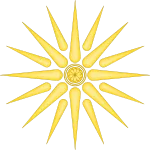
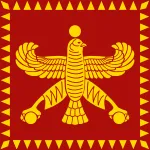




.svg.png.webp)
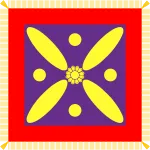
.svg (1).png.webp)


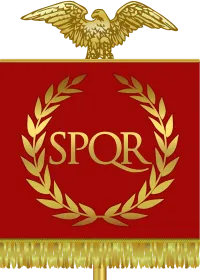
.png.webp)

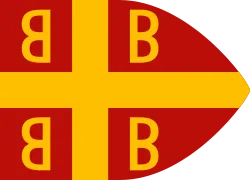


.png.webp)
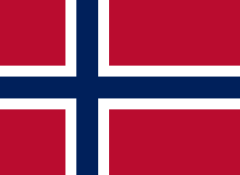
.svg.png.webp)


.svg.png.webp)

.png.webp)

.png.webp)


.svg.png.webp)
.svg.png.webp)

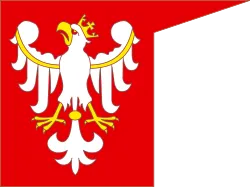
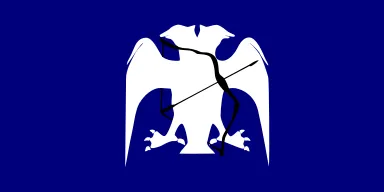

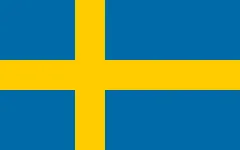

.svg.png.webp)




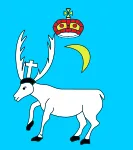
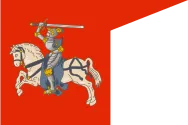
.svg.png.webp)
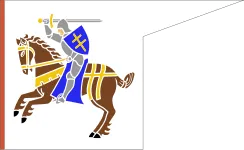




.svg.png.webp)
.svg.png.webp)




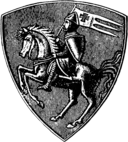


.png.webp)







.svg.png.webp)

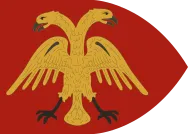





.svg.png.webp)
.svg.png.webp)

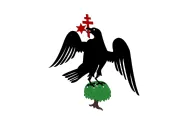






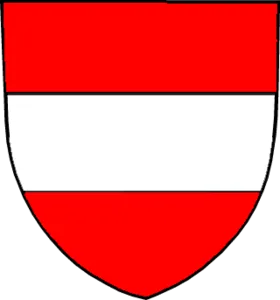


.svg.png.webp)


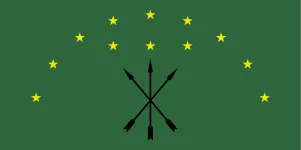
.svg.png.webp)

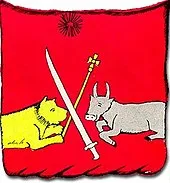

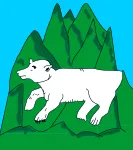
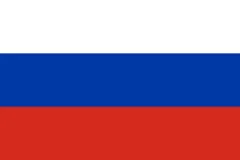
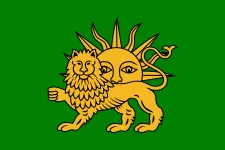
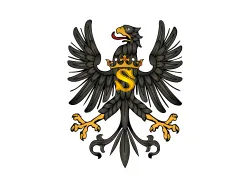
_(1526-1540).svg.png.webp)
.svg.png.webp)
.svg.png.webp)
.svg.png.webp)

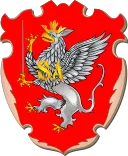

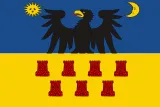
.svg.png.webp)
.svg.png.webp)


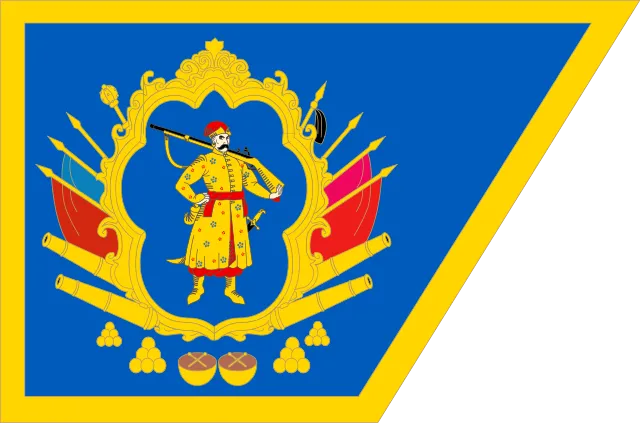

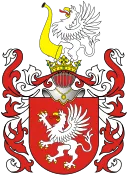
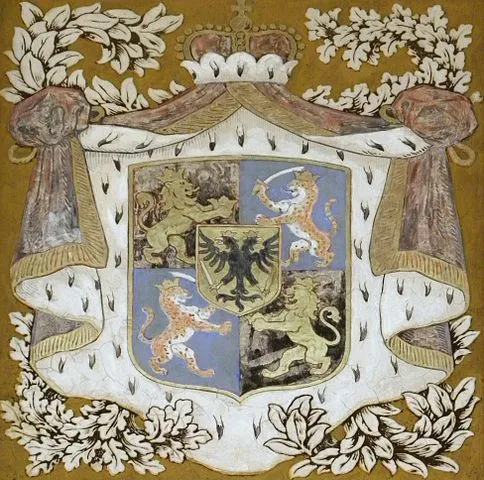
.svg.webp)
.svg.png.webp)
.svg.png.webp)

.svg.png.webp)
.svg.png.webp)
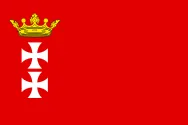
.svg.png.webp)

.png.webp)
.svg.png.webp)
.svg.png.webp)
.svg.png.webp)
.webp)
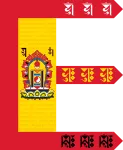
.svg.png.webp)
.svg.png.webp)
.svg.png.webp)
.svg.png.webp)
.svg.png.webp)

.webp)
.svg.png.webp)



.svg.webp)


.svg.png.webp)
.svg.png.webp)


.svg.png.webp)
.svg.png.webp)

.svg.png.webp)
.svg.png.webp)
.svg.png.webp)

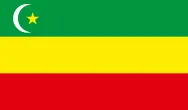

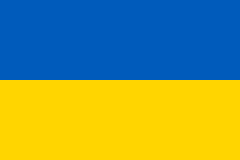
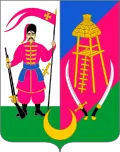



.svg.png.webp)
.svg.png.webp)
.svg.png.webp)

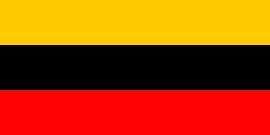

.svg.png.webp)
.svg.png.webp)
.png.webp)
.svg.png.webp)




.svg.png.webp)
.svg.png.webp)
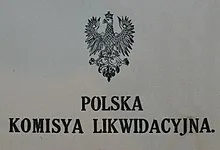
.svg.png.webp)
.svg.png.webp)
.png.webp)
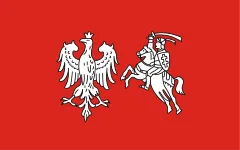

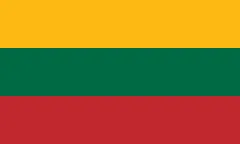



.svg.png.webp)
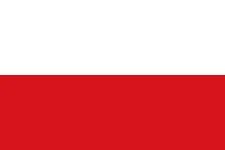

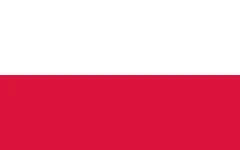
.svg.png.webp)
.png.webp)

.svg.png.webp)

.svg.png.webp)
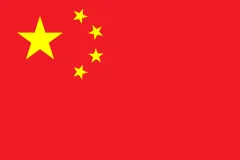
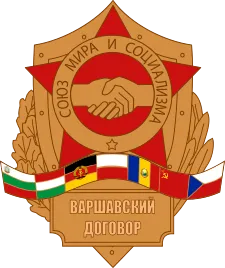
.png.webp)

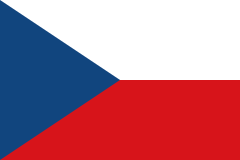
.svg (1).png.webp)
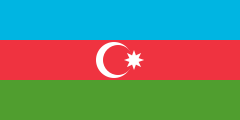
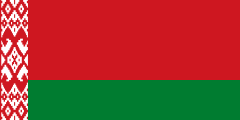

.svg.png.webp)
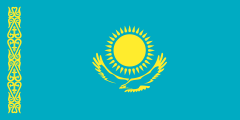
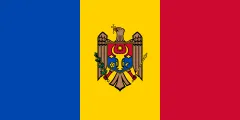
.svg.png.webp)
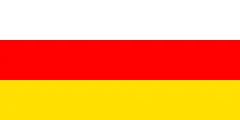


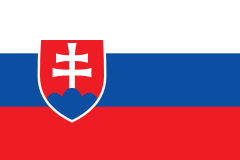
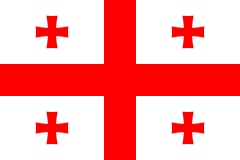
.png.webp)



.svg.png.webp)


























